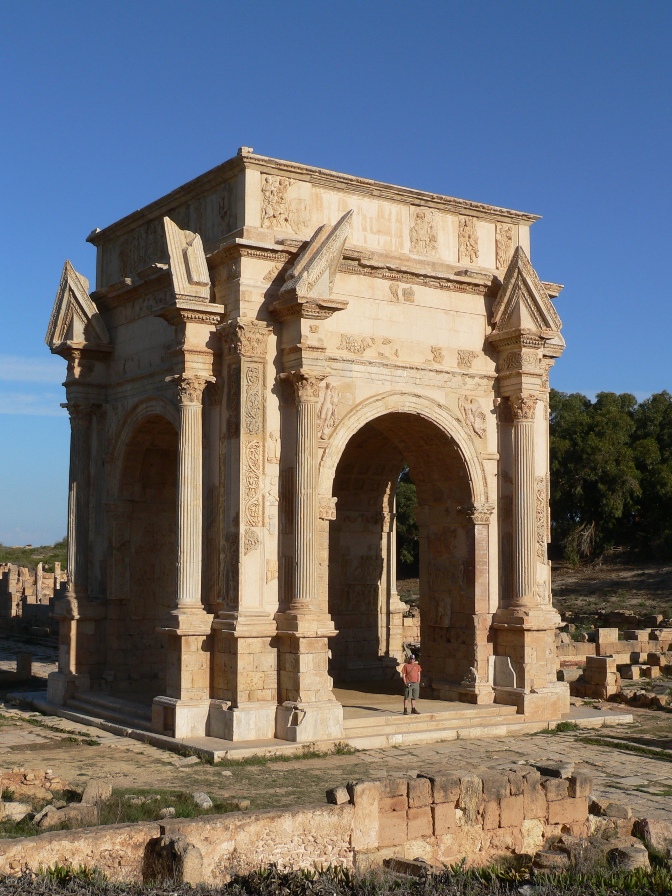

Western Libya has two well preserved Roman/Byzantine cities, Leptis Magna and Sabratha, which were extensively excavated and rebuilt by the Italians during their colonial occupation in the 1920s and 30s.
Both cities are on the sites of Carthaginian settlements. Not much architecture that can be identified as Carthaginian remains but Phoenician names and script abound well into the late Roman period.
Leptis seems to have been abandoned at the end of the Roman period with only a small portion being reoccupied after the Byzantine reconquest of North Africa from the Vandals (see the odd square arches in the photos of Byzantine wall which cuts off a small portion of the Roman city) and then abandoned and forgotten with the Arab conquest. As a result a lot of the grand public architecture endowed on the city by it's greatest son Septemus Serverus (he became emperor at the end of the 2nd Century AD and he died in York) was still on site for the Italians to reerect. The best example is his triumphal arch above (only one of the four arches was standing when the Italians found it), but there is also the Public Baths, and the New Forum and Basilica both of which are huge.
Inscriptions on the market and theatre show that they were built for the city by a wealthy family with a Phoenician name.
The amphitheatre is largely still intact having been built down into a hillside. A circus or hippodrome was later added on the seafront requiring a large viaduct to be built to the top amphitheatre seats across the access to the circus. Shrines to Diana or Nemesis, sacred to gladiators, were found in the amphitheatre and are now in the Leptis museum.
Sabratha is a smaller site but has a spectacular three story theatre back drop with the sea beyond - I'm not clear how much of this was standing before the Italians. Sabratha also has three huge and spectacular mosaics from a 5th century Byzantine church that once stood right down on the sea front. These were moved by the Italians into a museum on site.
The Phoenicians settled these sites because they offered protection to their ships that coasted back along Africa from ore rich Spain, their ships only travelled 30 miles daily and required tying up at night. The African coast is natural harbour poor, at Sabratha you can see the set of reefs that formed the natural harbour, as harbours go it is less than impressive! At Leptis the Romans dug out the mouth of the wadi, redirected it so that their newly dug ship basin would not silt up again and built a lighthouse. Without their constant care the wadi reasserted it's natural course and the basin silted up but the basin and the base of the lighthouse can still be seen.
Shirl & Adrienne 2006